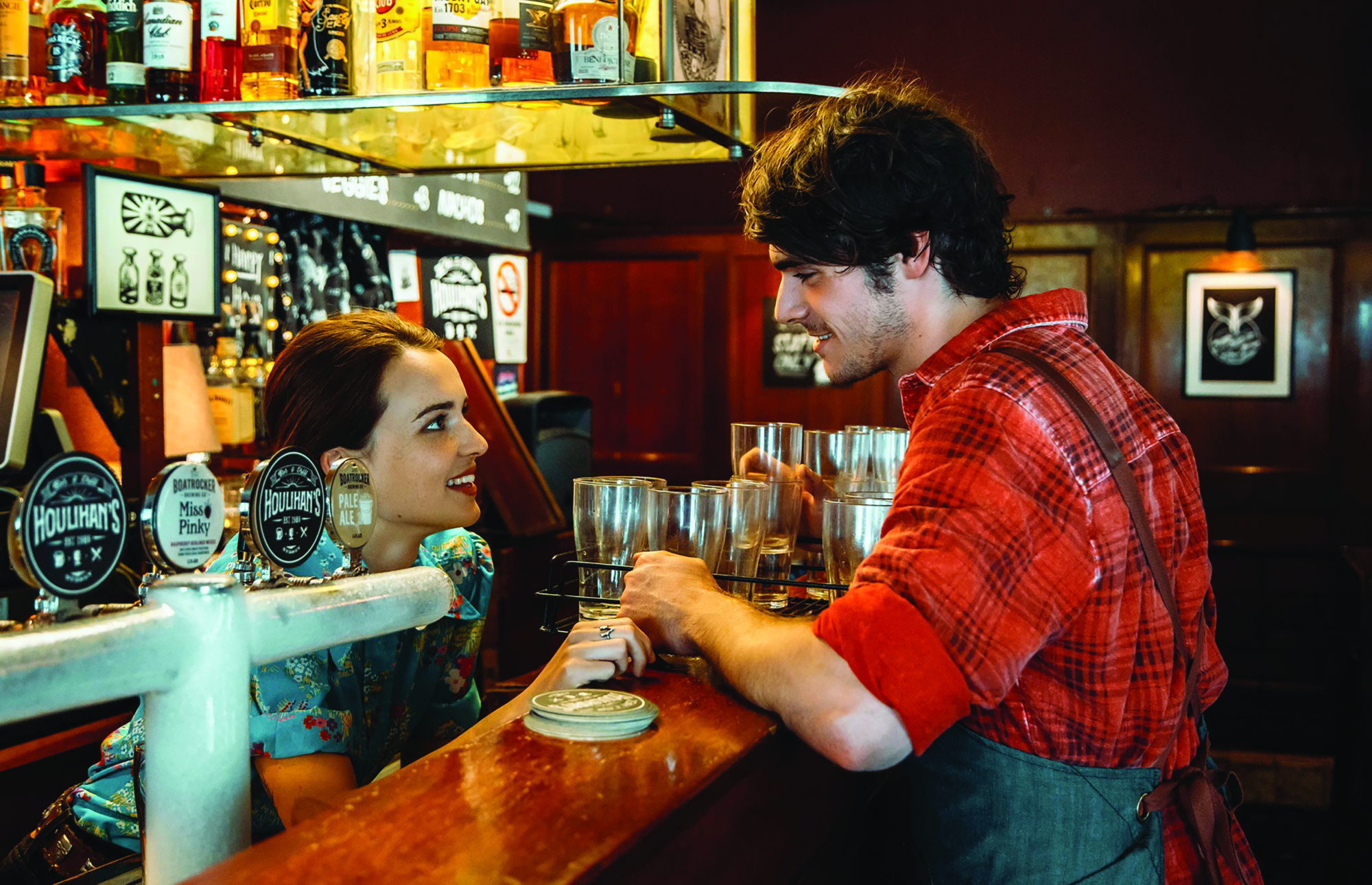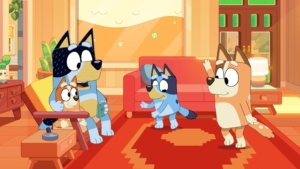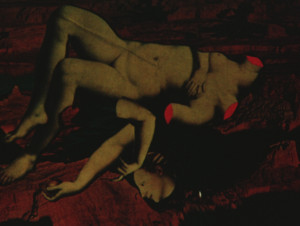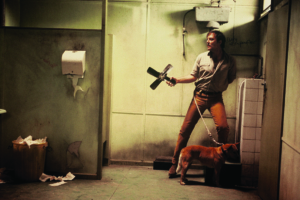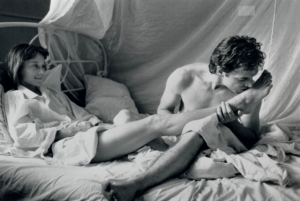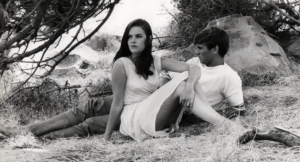‘This is real life, not some cutesy fairytale,’ shouts a spurned lover in local indie rom-com Standing Up for Sunny (Steven Vidler, 2019). ‘You kiss a frog – in the morning, it’s still going to be a frog.’
Implausibly, the ‘frog’ in question is the film’s drop-dead gorgeous lead, Travis (RJ Mitte, of Breaking Bad fame). Uttered with venom to Sunny (Philippa Northeast) by the obligatory not-right-for-her boyfriend Mikey (Sam Reid), the line is just one of many bigoted slights about Travis’ cerebral palsy made by the ableist characters populating the film. Yet, in its specific allusion to fairytale endings, it is actually a line that speaks perfectly to disabled people’s complicated relationship with happily-ever-afters.
The romance genre proselytises two separate, and somewhat conflicting, truths about love. The first is that love is true when someone loves you for who you are, warts and all. The second is that love is transformative – that it makes people want to be their best selves, brings princesses out of eternal sleeps, turns beasts into beauties and frogs into princes. This leaves disabled characters in a bind. Regardless of whether a disability is acquired or congenital, an ableist lens positions the disabled person as the imperfect form of who they are or who they could be. If love does not magically ‘restore’ the disabled person to their abled self, loving them wholly as they are is read as settling. As a sacrifice.
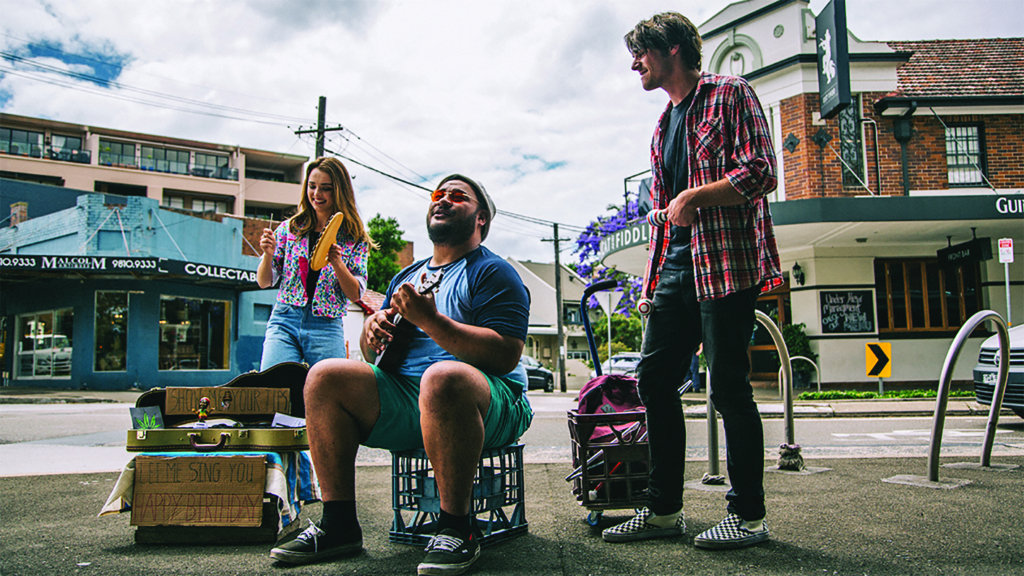
These competing issues might be better understood in terms of what’s come to be known as the ‘Fries Test’. Developed by Kenny Fries, the editor of Staring Back: The Disability Experience from the Inside Out, [1]Kenny Fries, Staring Back: The Disability Experience from the Inside Out, Plume, New York, 1997. the test is posited as disability representation’s answer to the Bechdel Test and asks just three things:
Does a work have more than one disabled character? Do the disabled characters have their own narrative purpose other than the education and profit of a nondisabled character? Is the character’s disability not eradicated either by curing or killing?[2]Kenny Fries, ‘The Fries Test: On Disability Representation in Our Culture’, Medium, 2 November 2017, <https://medium.com/@kennyfries/the-fries-test-on-disability-representation-in-our-culture-9d1bad72cc00>, accessed 11 February 2020.
So strong is the rom-com genre’s distaste for disability clouding the perfect, abled vision of the happily-ever-after that films falling under its banner rarely pass that final question. Take the recent high-profile example Me Before You (Thea Sharrock, 2016), panned widely by the disabled community[3]See, for example, Ben Quinn, ‘Disability Rights Campaigners Protest at Premiere of Me Before You’, The Guardian, 26 May 2016, <https://www.theguardian.com/society/2016/may/25/disability-rights-campaigners-protest-at-premiere-of-me-before-you>; and Stephanie Merry, ‘Me Before You Has a Disabled Main Character – but Activists Are Angry. Here’s Why.’, The Washington Post, 4 June 2016, <https://www.washingtonpost.com/news/arts-and-entertainment/wp/2016/06/03/me-before-you-has-a-disabled-main-character-but-activists-are-angry-heres-why/>, both accessed 11 February 2020. for its romance between eventual carer/lover Lou (Emilia Clarke) and quadriplegic Will (Sam Claflin, an able-bodied actor[4]Known in disability-activism circles as ‘cripping up’; see Holly Williams, ‘Will Disabled People Ever Get the Stories They Deserve?’, BBC Culture, 2 December 2019, <http://www.bbc.com/culture/story/20191201-will-the-disabled-ever-get-the-stories-they-deserve>, accessed 21 February 2020. See also James I Charlton, Nothing About Us Without Us: Disability Oppression and Empowerment, University of California Press, Berkeley, 1998. ) – which ends with him going through with assisted suicide so that she won’t have to endure ‘half a life’ with him. When disabled bodies are written as nothing but burdens, it’s not difficult to then perceive the destruction of those disabled bodies as romantic gestures.
Standing Up for Sunny offers a welcome detour from such pitfalls. The film begins with Travis, a school janitor whose rage issues are so extreme that, in the opening scenes, we see him destroy a flagpole while trying to mow down a pack of mean students with his car. Travis’ anger problem goes from liability to superpower when he attends a comedy night where the charming yet meek Sunny is performing nightmarishly dull material about toast. When she’s heckled by a sexist audience member who suggests she jump offstage and fetch him a pint ‘with a lot of head’, Travis steps in and, well, stands up for Sunny, tearing the blokey douchebag a new one with a series of rapid-fire digs. A natural comedic talent and insult maestro, Travis becomes the night’s hero.
But Sunny’s irritating radio-presenter boyfriend Mikey sees Travis as a resource, a fountain of fury he can exploit to teach Sunny how to get a backbone onstage – the final step in his long-term mission to mould her into a star comedian, radio co-star and worthy girlfriend. ‘How would this work, being my personal rage guru?’ asks Sunny of what is, fortunately, a premise quickly dismissed once it serves its purpose of bringing our lovebirds together.
The gratitude society has conditioned us to feel can readily be leveraged, used to maintain a power imbalance. Standing Up for Sunny doesn’t merely avoid reinforcing the trope of the disabled-lover-as-burden seen in Me Before You – it skewers just how manipulative it can be.
While it indulges in its fair share of saccharine contrivances, Standing Up for Sunny maintains just enough self-awareness to (mostly) get away with them. You might begrudge, for instance, the somewhat sporadic, arguably unnecessary narration for spoonfeeding the story’s message to the audience. Delivered by Travis’ friend and roommate Gordo (Italia Hunt) through a series of upbeat voiceover aphorisms, it rarely adds much to the blossoming romance between Travis and Sunny that isn’t readily apparent. Yet, in a scene wherein Gordo is questioned at the pub about who he is, he chimes back that he’s Travis’ ‘wise mentor – his “magical negro”’.[5]See Zuleyka Zevallos, ‘Hollywood Racism: The Magical Negro Trope’, Other Sociologist, 24 January 2012, <https://othersociologist.com/2012/01/24/hollywood-racism/>, accessed 11 February 2020. While his construction may be a little on the nose, the character at least seems aware that it is.
Standing Up for Sunny also undercuts much of its overt, ukulele tweeness with a willingness to delve into darker territory. When Travis prompts Sunny to dig a little deeper into what she really wants to talk about in her stand-up, she reveals her own condition: bulimia, developed in the wake of childhood abuse, a backstory later shown to share uncomfortable resonances with Travis’ own path to disability. For Sunny, trauma and illness tarnish her – making her cling to the controlling Mikey all the more tightly. When healthy, abled people deign to be with the sick and the invalid, the gratitude society has conditioned us to feel can readily be leveraged, used to maintain a power imbalance. Standing Up for Sunny doesn’t merely avoid reinforcing the trope of the disabled-lover-as-burden seen in Me Before You – it skewers just how manipulative it can be.
When a newly emboldened Sunny begins to reject the career aspirations Mikey has laid out for her, he retaliates that he ‘didn’t have to pick [her]’. She acknowledges that, while he’s right, a relationship shouldn’t centre on reminding the sick person of that: ‘You make me feel lucky to be with you,’ she says, ‘like I’m this broken thing and you’re the only one on the planet that can fix me. Maybe. If I’m lucky.’ This idea of being ‘lucky’ responds directly to the lineage of romance films Standing Up for Sunny follows – see: Children of a Lesser God (Randa Haines, 1986) and Rust and Bone (Jacques Audiard, 2012) – and, indeed, is an idea that could easily and earnestly appear in any of its forebears without a trace of irony.
Loving a disabled person does not make one more noble – nor does it mean one has settled. One of Standing Up for Sunny’s finest sequences is a slow-motion, moodily lit, acoustically scored sex scene that recognises Mitte for what he is: one of the industry’s hottest young actors, with eyebrows handcrafted for only the sexiest of brooding. The camera charts his body with the kind of cinematic eroticism that disabled people have been denied since film’s inception;[6]See Anna Malinowska, ‘Lost in Representation: Disabled Sex and the Aesthetics of the “Norm”’, Sexualities, vol. 21, no. 3, 1998, pp. 364–78. ‘objectification equality’, as I like to call it, is still a win for equality.

Plot-wise, the mounting stakes of Sunny’s, and later Travis’, triumphs through a national open-mic comedy competition drive things along simply enough, culminating in the film’s most compelling scene: Travis, having won a spot to perform on live TV, makes the genre’s requisite impassioned declaration of love via a five-minute stand-up set, shown in its entirety with minimal cuts. Finally his whole, authentic self on stage, Travis talks about the girl who fell for him – even though he walks funny, talks funny and ‘dance[s] like a praying mantis on crack’.
‘Maybe I’ll always be the wrongest guy,’ says Travis, ‘but, if she’s okay with that and can love me, anyway, there’s gotta be something wrong with her, too.’ As a rom-com, Standing Up for Sunny manages to successfully walk a very fine line. Disability, this film reminds us, isn’t something that totally negates love, nor is it something to be graciously ignored so that you might fall in love with the person behind the disability. Instead, it is part of someone – not all of them, not none of them. It’s just one more part of them to love.
*
Cerulean Blue (Adrian Ortega, 2019), another recent Australian film touching on disability, offers a stark tonal and pacing shift from Standing Up for Sunny. Despite coming in at just over an hour, it feels slower – scenes are given more space to breathe within its simple road-movie structure and pared-back cast.
The film begins with our male lead, Alex (Jack Michel), trying to pay for fuel. The servo attendant has fallen over and asks Alex for help. Never cutting to the attendant – never diverting from Alex’s expression at all – we watch his hesitation to help in excruciating, drawnout detail. It’s soon apparent that his unwillingness to help is not due to callousness. Staying with his discomfort for so long, we feel how powerful the mental block stopping him must be, a directorial choice that both acknowledges and offers a palpable, if incomplete, insight into his undisclosed neuroatypicality.
Alex is on a mystery mission that sees him driving through the back roads of the country – and, while he successfully dodges wild-child hitchhiker Lily (Senie Priti) twice, a flat tyre forces him to begrudgingly accept her as a passenger.
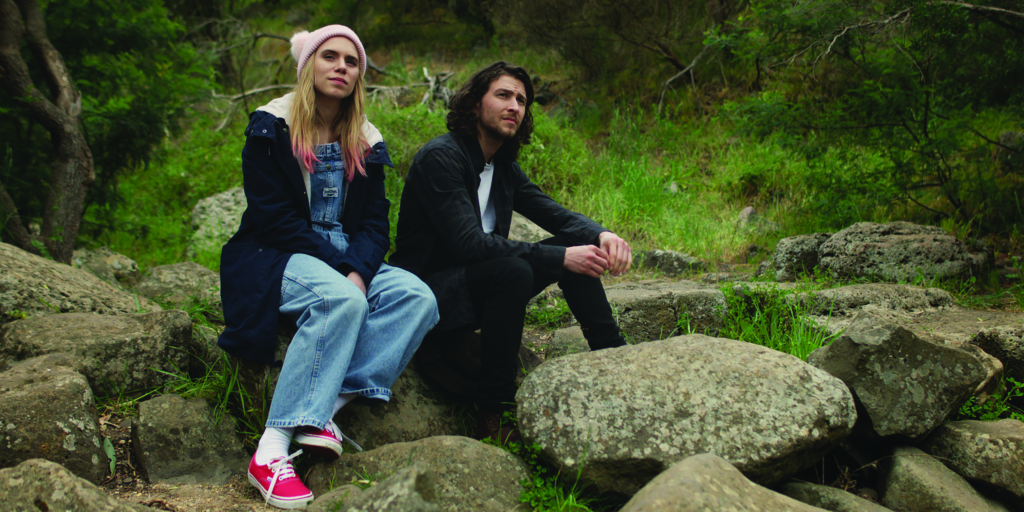
One of the most popular couplings in the romantic comedy is that of the neurotically uptight character and their wildly reckless counterpart.[7]See ‘Uptight Loves Wild’, TV Tropes, <https://tvtropes.org/pmwiki/pmwiki.php/Main/UptightLovesWild>, accessed 11 February 2020. In Along Came Polly (John Hamburg, 2004) – an archetypal recent example – the highly strung Reuben (Ben Stiller) counts thrusts during sex and runs potential partners through risk-analysis software before committing to them. Polly (Jennifer Aniston) is his polar opposite and encourages him to make more impulsive choices, like stabbing the dozens of precisely-laid-out decorative pillows on his bed with a knife to regain a sense of freedom and agency. As this case shows, the pair’s obvious conflicts facilitate comedy, their undeniable enchantment a classic case of ‘opposites attract’, their inevitable love a testament to meeting in the middle – to teaching each other to take life more/less seriously.
Comedy relies on personality extremes. Yet at what point can a character’s zaniness be considered a genuine manifestation of a neuroatypical condition? Does it need to be named to count? Should we regard Reuben as merely fastidious, or is he someone with obsessive-compulsive disorder (OCD)? Given the film ends with Polly having ‘transformed’ Reuben into a more idealised, carefree form, are we intended to glean that love indeed cures all, or that there wasn’t anything medical to cure in the first place?
While studios love to draw on the comedic potential of diagnoses … there’s often a reluctance to formally acknowledge that any particular character has them. Giving a ‘quirky’ behaviour a clinical name would create an onus for accuracy and consistency.
With slim pickings in terms of representation, it’s no wonder that disabled viewers learn to find ourselves in coded characters – because, while studios love to draw on the comedic potential of diagnoses like OCD, attention deficit hyperactivity disorder (ADHD), bipolar or intellectual disability,[8]The extreme cleanliness of Monica (Courteney Cox) was a comedic well that sitcom Friends regularly drew from. Other examples include Amy’s (Melissa Fumero) possible OCD in cop comedy Brooklyn Nine-Nine, Andy’s (Chris Pratt) implied ADHD in satirical sitcom Parks and Recreation, Ernie’s (Jim Carrey) assumed bipolar in dark comedy The Cable Guy (Ben Stiller, 1996) and Derek’s (Stiller) ostensible intellectual disability in the film Zoolander (Stiller, 2001). there’s often a reluctance to formally acknowledge that any particular character has them. Giving a ‘quirky’ behaviour a clinical name would create an onus for accuracy and consistency – things that might be seen as obstacles (to, say, casting and creative expression[9]See, for example, Williams, op. cit.; and Jules Suzdaltsev, ‘How Good Is Hollywood at Portraying Mental Illness?’, VICE, 22 October 2014, <https://www.vice.com/en_au/article/xd5mgn/hollywood-sucks-at-portraying-mental-illness>, accessed 11 February 2020. ) if you’re not particularly invested in constructive representations of disability.
Given this context, it’s a heartening change that Cerulean Blue is able to create such a fun interplay between its neuroatypical and neurotypical leads without falling into the disposable gags of its predecessors. While Alex and Lily’s exchanges are stilted, there’s a palpable chemistry within these newly acquainted strangers’ stiltedness – the joke rarely being on either one’s specific foibles, and instead focusing on the gap in understanding between them.
Similarly, there’s never a sense that Alex’s condition is something to be cured. Much like that of Travis in Standing Up for Sunny, it’s simply another aspect of him to be loved. In a surprisingly sweet moment, Lily returns from paying for petrol with a small bottle of detergent. She’s noticed that Alex compulsively cleans his hands after most interactions – and that he’s nearly run out. She hands him the new bottle, and he sees she’s drawn a smiley face on it. His compulsions aren’t something for her to fix, or even to interrogate. Wholeheartedly, and instantly, she accepts that’s who he is – and, as we see the hint of a smile broach his face, we get a sense of how rare that must feel for him.
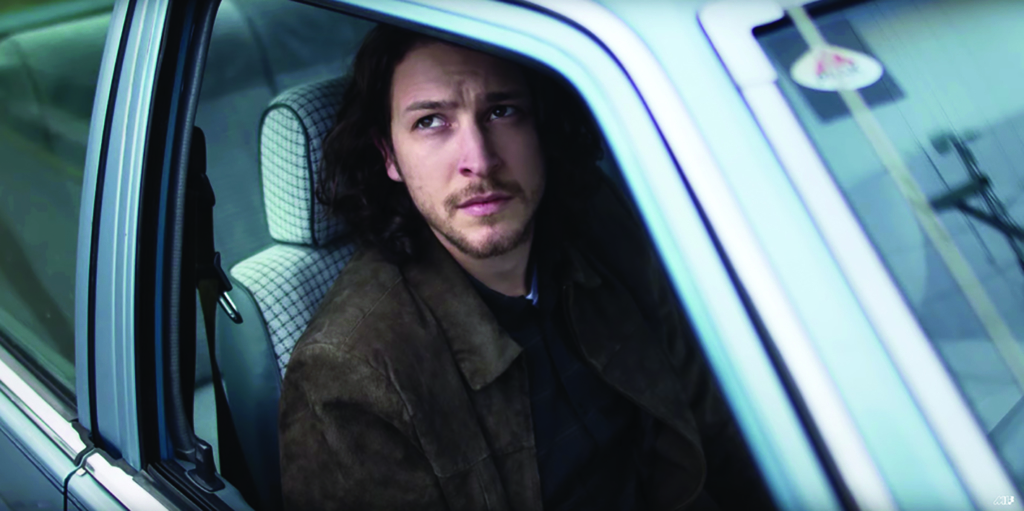
The answer to why Alex and Lily are each on their trips to Melbourne – running to and from someone, respectively – is revealed bit by bit as they learn to become more vulnerable with each other. As the truth comes out, so does the emotional baggage preventing them from seeing the love that’s right in front of them.
Unlike Standing Up for Sunny, Cerulean Blue doesn’t end on a note of unambiguous happiness; the fates of our leads, and what will happen next, remain unclear. But the genuine tenderness of the performances, including a remarkable scene in which Alex asks if he can read Lily a speech he’s been working on for a lost love, resonates long after the credits roll. As the film gradually makes plain, Alex’s biggest issue is his desire to make his displaced feelings of love conform to a neat, romantic narrative, all of which are tied up with his prepared speech. But neither life nor love are quite so convenient. In Cerulean Blue, love is not an arc but individual moments of understanding, seeing, caring.
For disabled audiences, romance remains a fraught genre. While we have just as much desire for love – real or vicarious – as anyone else, it has so regularly been presented in ways that seek to diminish us. A generosity. A cure. Something withheld because of our disabilities, something given in spite of our disabilities.
It’s understandable that many of us have cultivated a cynicism towards romance. But, hopefully, these two recent additions to indie cinema are the first signs of a global shift towards more authentic, nuanced representations of disability in love stories – ones in which we’re not left waiting on a kiss to turn us into perfect, abled princes.
http://standingupforsunny.com/
Endnotes
| 1 | Kenny Fries, Staring Back: The Disability Experience from the Inside Out, Plume, New York, 1997. |
|---|---|
| 2 | Kenny Fries, ‘The Fries Test: On Disability Representation in Our Culture’, Medium, 2 November 2017, <https://medium.com/@kennyfries/the-fries-test-on-disability-representation-in-our-culture-9d1bad72cc00>, accessed 11 February 2020. |
| 3 | See, for example, Ben Quinn, ‘Disability Rights Campaigners Protest at Premiere of Me Before You’, The Guardian, 26 May 2016, <https://www.theguardian.com/society/2016/may/25/disability-rights-campaigners-protest-at-premiere-of-me-before-you>; and Stephanie Merry, ‘Me Before You Has a Disabled Main Character – but Activists Are Angry. Here’s Why.’, The Washington Post, 4 June 2016, <https://www.washingtonpost.com/news/arts-and-entertainment/wp/2016/06/03/me-before-you-has-a-disabled-main-character-but-activists-are-angry-heres-why/>, both accessed 11 February 2020. |
| 4 | Known in disability-activism circles as ‘cripping up’; see Holly Williams, ‘Will Disabled People Ever Get the Stories They Deserve?’, BBC Culture, 2 December 2019, <http://www.bbc.com/culture/story/20191201-will-the-disabled-ever-get-the-stories-they-deserve>, accessed 21 February 2020. See also James I Charlton, Nothing About Us Without Us: Disability Oppression and Empowerment, University of California Press, Berkeley, 1998. |
| 5 | See Zuleyka Zevallos, ‘Hollywood Racism: The Magical Negro Trope’, Other Sociologist, 24 January 2012, <https://othersociologist.com/2012/01/24/hollywood-racism/>, accessed 11 February 2020. |
| 6 | See Anna Malinowska, ‘Lost in Representation: Disabled Sex and the Aesthetics of the “Norm”’, Sexualities, vol. 21, no. 3, 1998, pp. 364–78. |
| 7 | See ‘Uptight Loves Wild’, TV Tropes, <https://tvtropes.org/pmwiki/pmwiki.php/Main/UptightLovesWild>, accessed 11 February 2020. |
| 8 | The extreme cleanliness of Monica (Courteney Cox) was a comedic well that sitcom Friends regularly drew from. Other examples include Amy’s (Melissa Fumero) possible OCD in cop comedy Brooklyn Nine-Nine, Andy’s (Chris Pratt) implied ADHD in satirical sitcom Parks and Recreation, Ernie’s (Jim Carrey) assumed bipolar in dark comedy The Cable Guy (Ben Stiller, 1996) and Derek’s (Stiller) ostensible intellectual disability in the film Zoolander (Stiller, 2001). |
| 9 | See, for example, Williams, op. cit.; and Jules Suzdaltsev, ‘How Good Is Hollywood at Portraying Mental Illness?’, VICE, 22 October 2014, <https://www.vice.com/en_au/article/xd5mgn/hollywood-sucks-at-portraying-mental-illness>, accessed 11 February 2020. |
